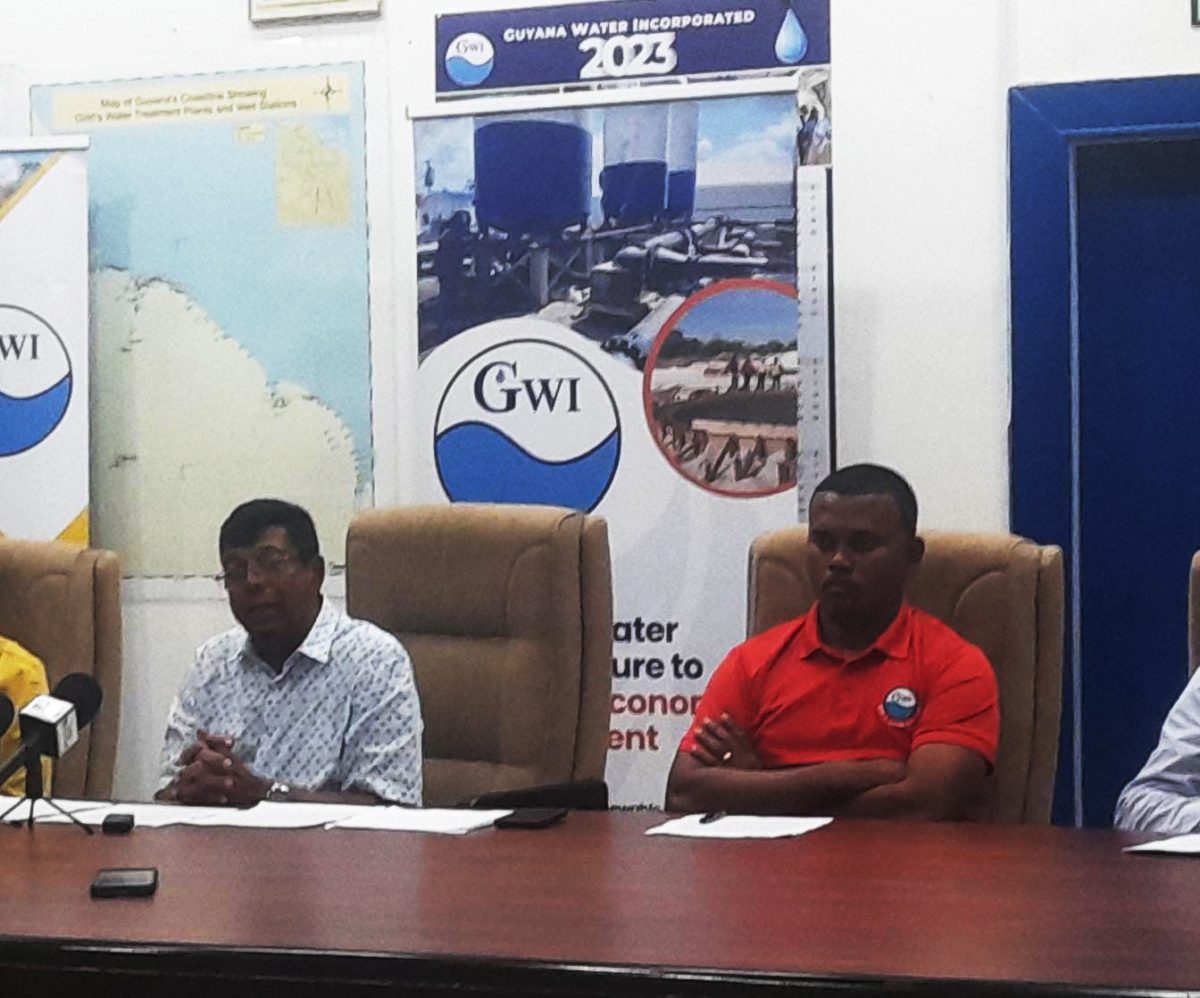Guyana Water Incorporated (GWI) has initiated a plan to mitigate the decline in surface water supply in various regions by increasing the number of wells, according to Ramchand Jailal, the executive director for hinterland services.
Speaking at a press conference, he said that even though 75 per cent of the population in the hinterland regions typically rely on rainwater harvesting, they are now increasingly turning to GWI’s systems. This shift has led to a higher demand, necessitating rationing to conserve water in these regions.
During the same press conference, Chief Executive Officer Shaik Baksh appealed to the general public to conserve water, especially in the face of the current hot weather. He highlighted that the hinterland regions have been severely affected due to the depletion of surface-level water sources like creeks and springs.
GWI has been collaborating closely with the Civil Defence Commission and the National Drainage and Irrigation Authority to monitor the situation. As an emergency measure, it has intensified well drilling in Mahdia and implemented a water rotation system to aid conservation efforts in the town and surrounding communities. The utility is also undertaking an extensive initiative across hinterland communities, aiming to drill 40 wells this year and an additional 50 to 60 wells next year. This ambitious endeavour is in line with the government’s goal of providing 100 percent access to reliable water supply in hinterland regions by 2025.
In the coastal areas, there is high demand for water from households and farming communities and the existing wells in the regions are already operating at maximum capacity. Water supply in regions Two, Three, and Four has remained relatively stable, although some areas have experienced a slight decrease in service levels. The Lamaha Canal, still a critical water source for a significant portion of Georgetown residents, has maintained its water levels. Conversely, residents in regions Five and Six are facing a minor reduction in service levels. Baksh noted that GWI is addressing this situation by ensuring a continuous 24-hour water supply at maximum levels in these regions. Additionally, it is implementing an intensive well-maintenance programme to guarantee a stable water supply over the long term.
Apart from challenges posed by El Nino, power outages are also impacting water supply across coastal regions. Furthermore, there have been instances of water infrastructure damage caused by contractors. As such, GWI is urging residents to report such incidents so that these contractors can be held accountable for their actions.






